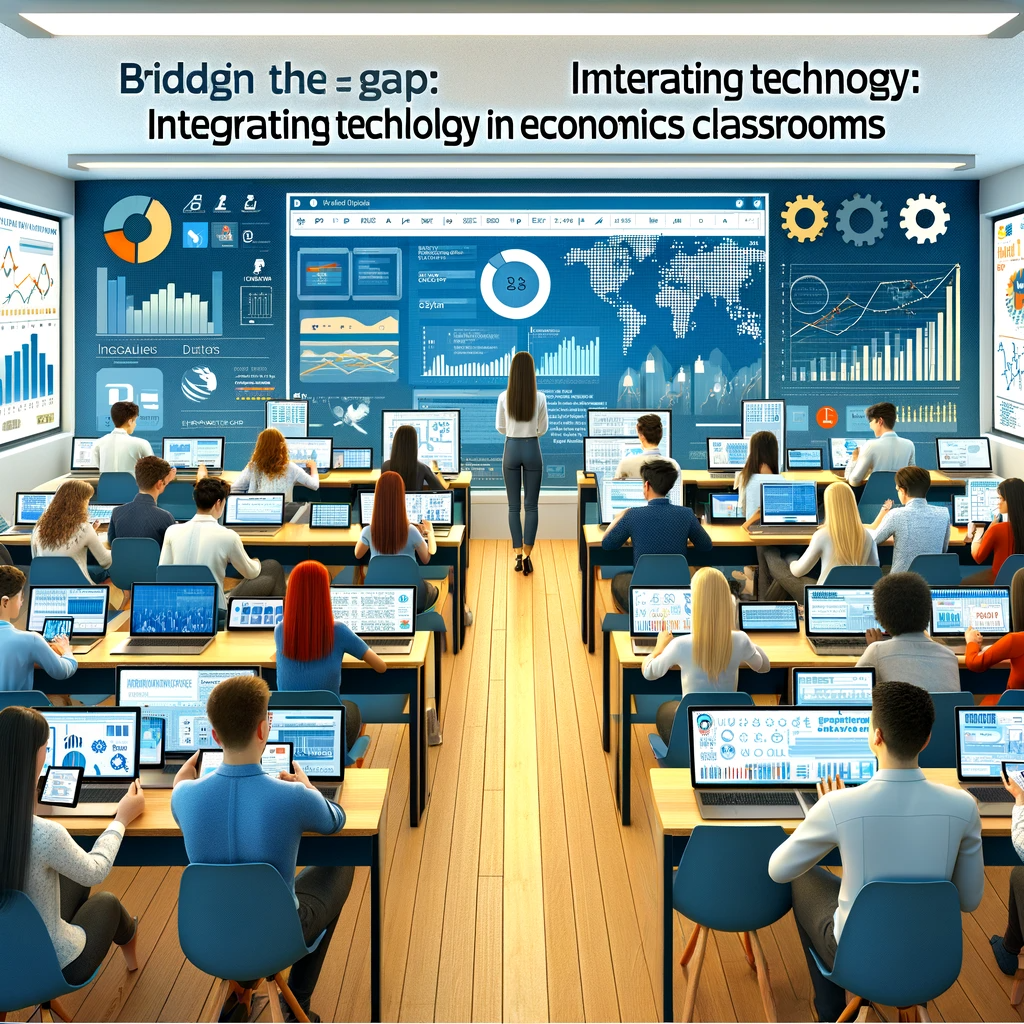Bridging the Gap: Integrating Technology in Economics Classrooms
The integration of technology in economics classrooms represents a significant stride towards modernizing education. In a discipline that often grapples with abstract concepts and complex models, technology serves as a bridge, making these ideas more tangible and accessible. This article explores how digital tools are transforming the way economics is taught and understood, making it more interactive, engaging, and relevant to the digital age learner.

The Digital Shift in Economics Education
Economics education is undergoing a digital revolution. Traditional teaching methods, while foundational, often fall short in capturing the dynamic nature of economics. The integration of technology in the classroom brings a fresh perspective, turning passive learning into an interactive experience.
Interactive Learning Through Simulations and Modeling
One of the most significant advancements in the field is the use of simulations and economic modeling software. These tools allow students to visualize economic principles in action. By manipulating variables in a simulated economy, students can see the immediate effects of policy changes, market shifts, and other economic phenomena.
Data Analysis and Big Data in Economics
The rise of big data has also found its way into the economics classroom. Teaching students how to analyze and interpret large datasets is crucial in a world where data-driven decision-making is paramount. Tools like statistical software and online databases provide students with real-world data to practice and hone their analytical skills.
Online Platforms and Resources
The internet has opened up a world of resources for economics students. Online platforms offer a plethora of learning materials, from video lectures and tutorials to interactive quizzes and forums for discussion. This not only supplements traditional learning but also allows for a more personalized education experience.
Enhancing Collaboration with Digital Tools
Technology also facilitates collaboration among students. Tools like shared documents, online discussion boards, and project management software enable students to work together seamlessly, irrespective of their physical location. This collaborative approach mirrors the interconnectedness of the global economy.
Virtual Reality and Augmented Reality in Economics Education
Emerging technologies like Virtual Reality (VR) and Augmented Reality (AR) are starting to make their way into economics education. These technologies offer immersive experiences, allowing students to explore economic models and environments in a three-dimensional space.
Preparing Students for a Digital Economy
Integrating technology in economics education does more than just enhance learning; it prepares students for the realities of a digital economy. In an era where technology permeates every aspect of life, understanding how to use these tools in a professional context is invaluable.
Challenges and Considerations
While the benefits are plentiful, integrating technology into economics education is not without its challenges. There is the issue of ensuring equal access to technology, training educators to use new tools effectively, and keeping the curriculum updated with the latest technological advancements.
Conclusion
The integration of technology in economics classrooms is not just a trend; it’s a necessary evolution in education. As the world becomes increasingly digitized, economics education must keep pace, using technology not only as a tool for teaching but as a means of preparing students for the future. By bridging the gap between traditional learning and the digital world, we are opening up a world of possibilities for the next generation of economists.


